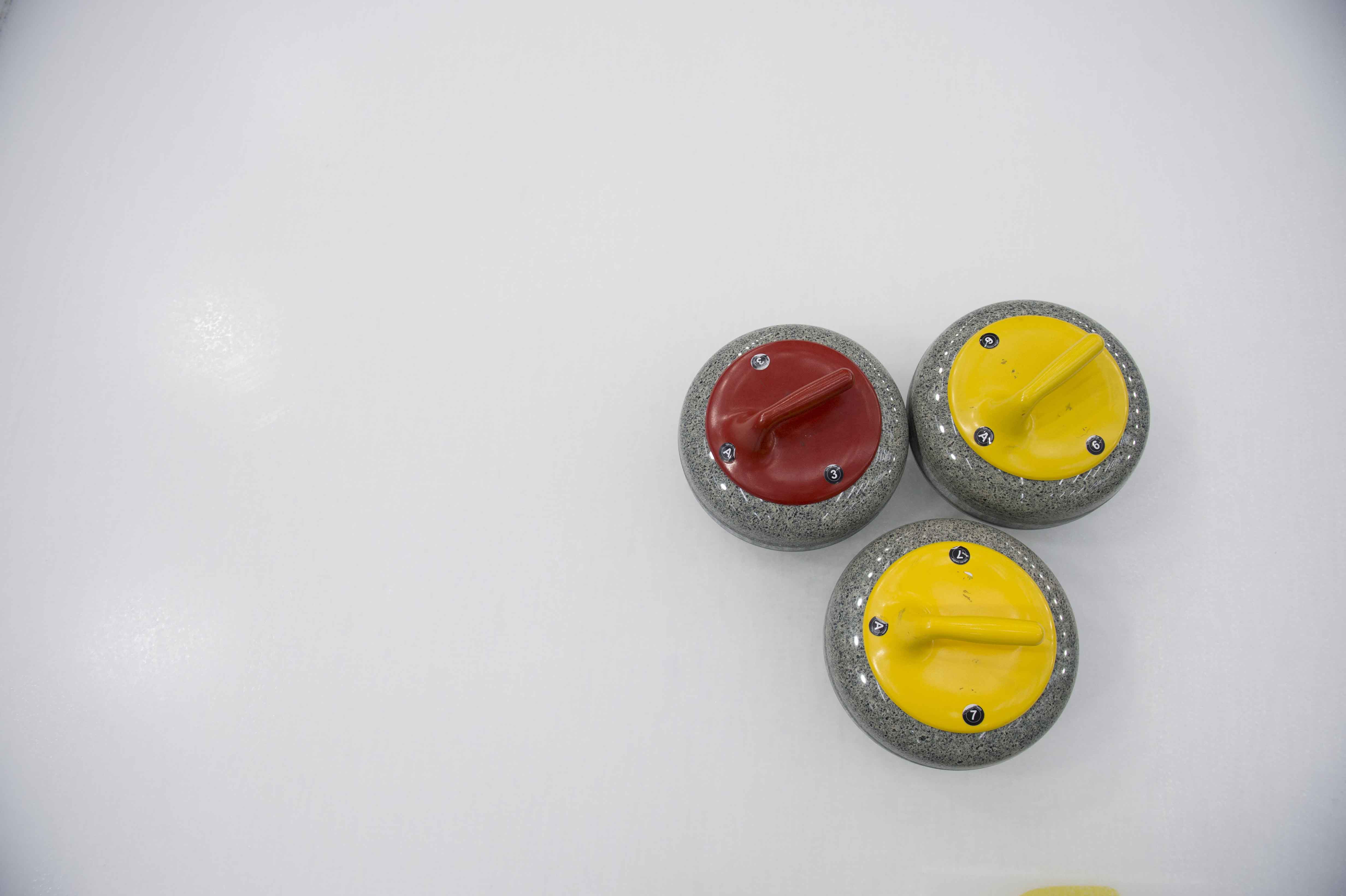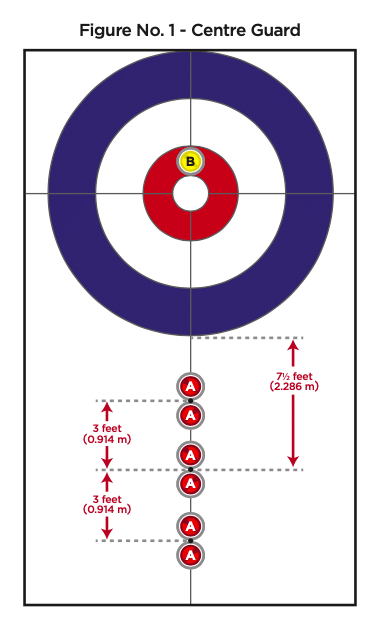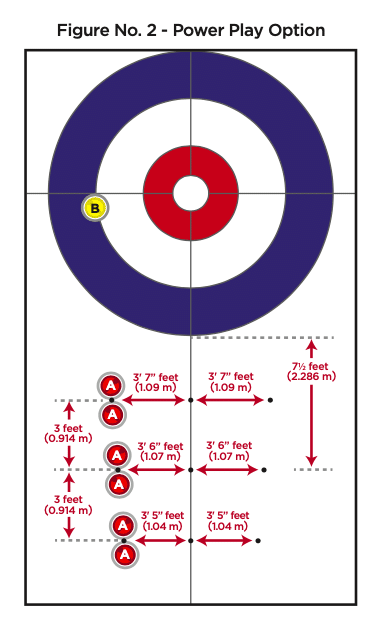
Mixed Doubles Curling Rules for Officiated Play
Rules
- A team is composed of two players, one male, and one female. Alternate players are not allowed.
- A team must forfeit any game(s) in which it fails to have both players playing for the entire game.
- The scoring shall be the same as in a regular game of curling. The “positioned” stones that are placed before the beginning of each end are eligible to be counted in the scoring.
- Each team shall deliver five (5) stones per end. The player delivering the team’s first stone of the end must also deliver the team’s last stone of that end. The other team member shall deliver the team’s second, third and fourth stones for that end. The player delivering the first stone can change from end to end.
- Modified Free Guard Zone: no stone in play, including the “positioned” stones and those in the house, can be moved to an out-of-play position prior to the delivery of the fourth stone of an end. If there is a violation, without exception, the delivered stone shall be removed from play, and any displaced stone(s) shall be replaced to their original position by the non-offending team.
Positioning
The major difference between regular curling and mixed doubles curling is the positioning of two stones – one per team – that are set before the beginning of each end. These “positioned” stones that are placed before the beginning of each end are also eligible to be counted in the scoring.
In a new term, the team with the ‘hammer’ or last stone advantage now has the option. That option is which stones to position where. Teams can decide to put their stone in the back four foot and the other team’s stone as the centre guard. If you choose this option, the opposition would deliver first in the end. If you choose to put your stone as the guard, then you would deliver first.
Before the start of every end, one team shall place their team’s “positioned” stone at the playing end of the sheet in one of two positions, designated A and B. The opponent’s “positioned” stone shall then be placed in whichever position (A or B) remains vacant. The location of these positions shall be as follows:

- Position A: Placement so that the stone is bisected by the centre line and is either immediately in front of or immediately behind one of three (3) points in the ice. Teams will mutually agree on the location. The points are placed on the centre line:
- At the mid-point between the hog line and the outermost edge of the top of the house 2.286 m. (7 feet 6 inches), or;
- 914 m (3 feet) from the mid-point (i) closer to the house, or;
- 914 m (3 feet) from the mid-point (i) closer to the hog line.
- Position B: The Position B stone is placed so that the stone is bisected by the centre line and is in the back of the 4-foot circle. The back edge of the stone is aligned with the back edge of the 4-foot circle (“see diagram”)

Power Play Option
- Once per game, each team, when they have the decision on the placement of the “positioned” stones, can use the “Power Play” option to position the stones.
- The in-house stone, which belongs to the team with last stone in that end, is placed with the back edge of the stone abutting the front edge of the tee line, with half the stone in the 8-foot and half in the 12-foot circle.
- The guard stone is positioned to the side of the sheet, so it would be bisected by a direct line between the middle of the in-house stone to the middle of the hack where the hack intersects with the centre line. The distance of this corner guard from the house will be the same distance that was determined for the centre guards and is either immediately in front of or immediately behind one of three (3) points in the ice.
- The team with the stone positioned in the house (stone B), shall position the guard (Stone A)
- At the mid-point between the hog line and the outermost edge of the top of the house 2.286 m. (7 feet 6 inches); then 1.07 m. (3 feet 6 inches) to the left or right of the centre line and the same side as the in-house stone, or;
- 914 m (3 feet) from the mid-point (i) closer to the house; then 1.09 m. (3 feet 7 inches) to the left or right of the centre line and the same side as the in-house stone, or;
- 914 m (3 feet) from the mid-point (i) closer to the hog line; then 1.04 m. (3 feet 5 inches) to the left or right of the centre line and the same side as the in-house stone, or;
- The corner guard can be placed on either side of the ‘spot’ (closer to the house or closer to the hog line) determined prior to the game.
- The “Power Play” option cannot be used in extra ends.
Additional Detail
- Teams will toss a coin for the decision in the first end.
- Following the first end, the team that did not score shall have the decision on the placement.
- If neither team scores in an end, the team that delivered the first stone in that end shall have the decision on placement in the next end.
- The team whose “positioned” stone is placed in Position A in both Figure No. 1 & No. 2 shall deliver the first stone in that end.
- While a team is in the process of delivery, that team’s non-delivering player may be anywhere on the ice surface.
- After delivery, either or both players may sweep their delivered stone and any stones set in motion belonging to their team anywhere in front of the tee line at the playing This applies to all the teams delivered stones.
- If a player delivers a stone out of proper rotation, the delivered stone is removed from play and any displaced stones are returned to their original positions by the non-offending team. Should the infraction not be discovered until after the delivery of a subsequent stone, play continues as if the infraction had not occurred; however, the player that delivered the first stone of the end can deliver a maximum of two stones in that end.




